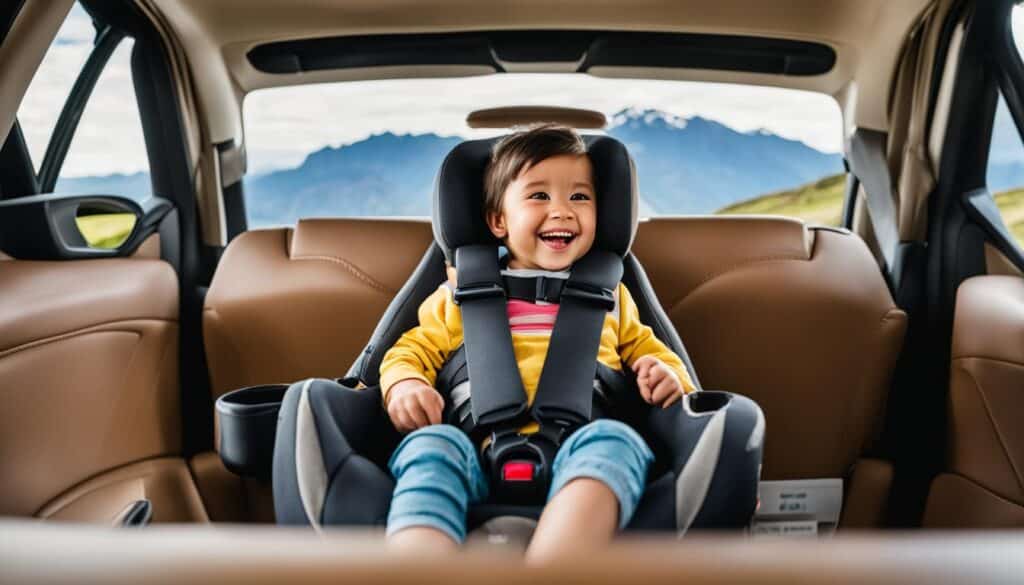As a parent or caregiver, ensuring the safety of your child while driving is of utmost importance. Adhering to car seat laws and guidelines in New Zealand can be crucial in protecting your child in the event of an accident.
Car seat laws and regulations in New Zealand can be complex and vary based on a child’s age, weight, and height. It is important to understand these regulations and guidelines to ensure the appropriate use of car seats for your child’s safety.
Key Takeaways:
- Adhering to car seat laws and guidelines in New Zealand is crucial for protecting your child while driving.
- Car seat laws and regulations in New Zealand vary based on a child’s age, weight, and height.
- Understanding these regulations and guidelines is important for the appropriate use of car seats and your child’s safety.
Car Seat Regulations in New Zealand
In New Zealand, car seat regulations are in place to protect children in cars. It’s essential to ensure that your child is seated in an age-appropriate car seat and that the seat is correctly installed in your vehicle.
Age-Specific Requirements
The requirements for car seats depend on the child’s age:
| Age | Car Seat |
|---|---|
| 0-6 months | Rear-facing infant car seat |
| 6 months-4 years | Forward-facing car seat with five-point harness |
| 4-7 years | Booster seat with adult seat belt |
| 7 years and above | Adult seat belt |
Children under the age of seven must use a car seat that is appropriate for their age and size. You can be fined if you do not have an appropriate car seat for your child.
Type of Car Seats
There are different types of car seats available in New Zealand, including:
- Rear-facing infant car seats
- Convertible car seats that can be used both rear-facing and forward-facing
- Forward-facing car seats with a five-point harness
- Booster seats with an adult seat belt
When selecting a car seat for your child, ensure that it meets New Zealand safety standards and is appropriate for your child’s age and weight.
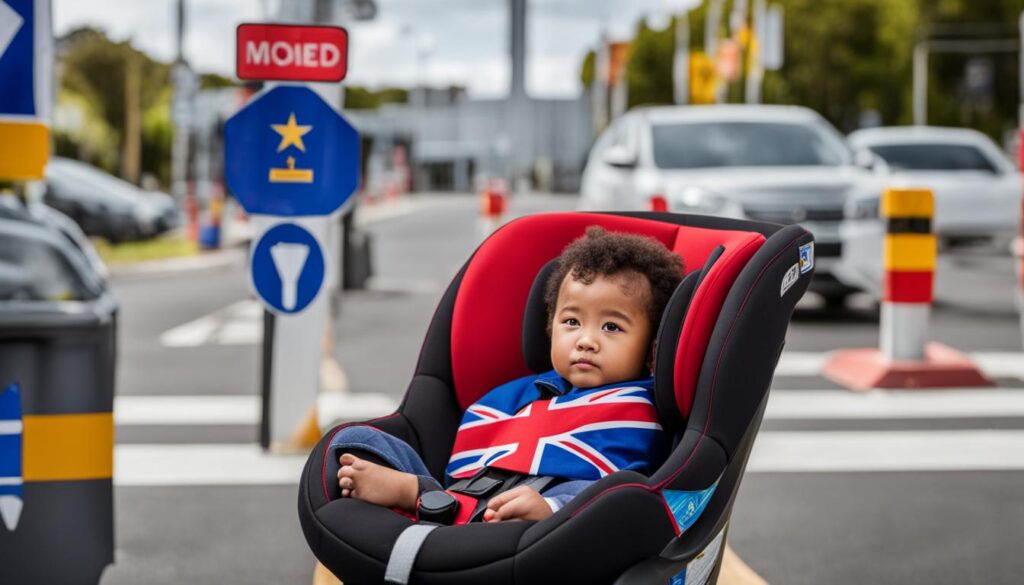
I cannot stress enough the importance of using the correct car seat for your child’s age and size. It is the best way to protect them in the event of an accident and ensure their safety while traveling in a vehicle.
Child Restraint Guidelines in New Zealand
As parents, our top priority is always the safety and wellbeing of our children. This is especially true when it comes to traveling in a vehicle. New Zealand has strict laws and regulations in place regarding child safety while driving, including child restraint guidelines for children of all ages. Adhering to these guidelines is crucial in protecting our children while on the road.
The child restraint guidelines in New Zealand are based on a child’s age, weight, and height. It is important to note that these guidelines are minimum requirements, and it is recommended that parents use the appropriate car seat for their child’s size, even if it exceeds the minimum requirements.
Child Restraint Requirements by Age
| Age | Restraint Requirement |
|---|---|
| 0-6 months | Rear-facing car seat |
| 6 months-4 years | Rear-facing or forward-facing car seat with a harness |
| 4-7 years | Forward-facing car seat with a harness or booster seat |
| 7-10 years | Booster seat or car seat with a booster seat |
| 10-14 years | Seat belt (with or without booster seat) |
It is important to note that children should continue to use a booster seat until they can pass the 5-step test:
- Can the child sit all the way back against the vehicle seat?
- Do the child’s knees bend comfortably at the edge of the vehicle seat?
- Does the shoulder belt cross the child’s shoulder between the neck and arm?
- Is the lap belt as low as possible, touching the child’s thighs?
- Can the child stay seated like this for the whole trip?
It is also important to follow the manufacturer’s instructions for installation and usage of the car seat, as well as ensuring that the car seat is appropriate for the make and model of the vehicle.
By following the child restraint guidelines and using the appropriate car seat for our children, we can ensure their safety and protection while traveling on New Zealand’s roads.
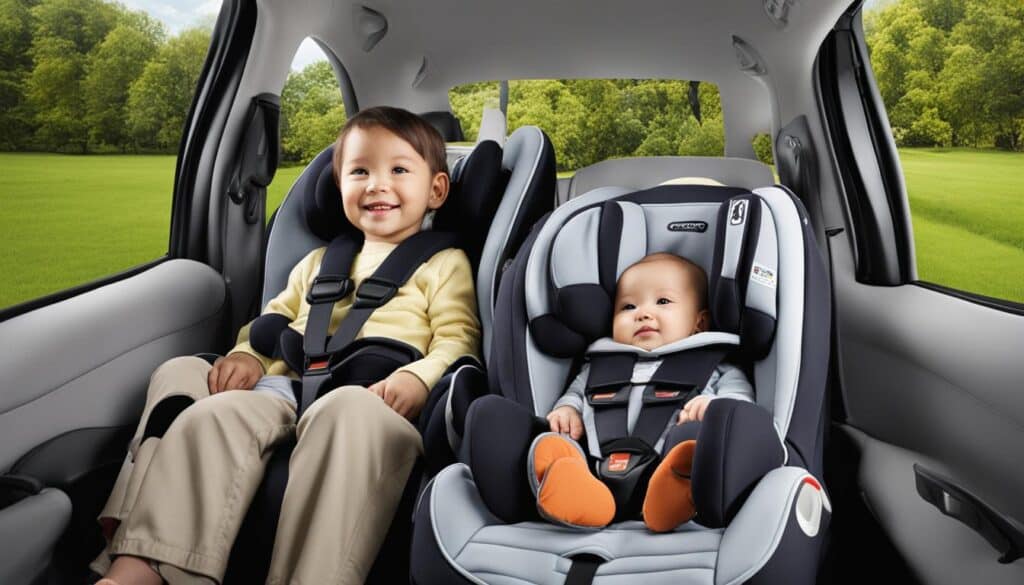
Infant Car Seat Laws in New Zealand
When it comes to infant car seat laws and regulations in New Zealand, there are specific guidelines that parents and caregivers must follow to ensure the safety of their child. Infants are the most vulnerable passengers in a car and require extra protection and care while traveling.
In New Zealand, infants must be placed in a rear-facing car seat until they are at least 6 months old. However, it is recommended to keep them in a rear-facing seat for as long as possible, until they reach the maximum weight or height allowed by the car seat manufacturer.
To ensure proper installation and usage, it is crucial to read and follow the instructions provided by the car seat manufacturer carefully. The installation of the car seat must be secure and tight with no visible movement, and the harness should be adjusted to fit the child snugly.
Types of Infant Car Seats
There are two types of infant car seats available in New Zealand:
| Car Seat Type | Weight Limits | Usage |
|---|---|---|
| Rear-Facing Infant Capsule | Up to 13 kg | From birth to around 6 months or until the infant reaches the weight limit specified by the car seat manufacturer |
| Rear-Facing Convertible Car Seat | Up to 18 kg | From birth to around 2-3 years or until the child reaches the weight and height limit specified by the car seat manufacturer |
It is important to choose a car seat that is appropriate for the child’s weight, height, and age, and meets the safety standards set by the government. Using a car seat that is too small or too big for the child may put them at risk of injury or death in the event of an accident.
Overall, following the infant car seat laws and regulations in New Zealand is essential for the safety of the child. It is important to choose the right car seat, properly install and use it, and stay up-to-date with any updates or changes in the regulations to ensure maximum protection for infants while driving.

Toddler Car Seat Laws in New Zealand
When it comes to traveling with toddlers in New Zealand, it is crucial to adhere to the car seat laws and regulations to ensure the safety of your child. According to the New Zealand Transport Agency, children must use an appropriate child restraint until they are at least seven years old.
The specific car seat requirements for toddlers depend on their age, weight, and height. Children aged between six months and four years old must use an approved child restraint. This can be either a rear-facing or forward-facing restraint, but it is recommended to keep your child in a rear-facing restraint for as long as possible, as long as their weight and height allows.
It is important to note that a child restraint must meet New Zealand safety standards and display the ‘S’ mark. Parents and caregivers can check the safety ratings of car seats on the NZ Transport Agency website.
Types of Toddler Car Seats
There are several types of toddler car seats available in New Zealand, including:
| Type of Car Seat | Age Range | Weight Range | Orientation |
|---|---|---|---|
| Convertible Car Seat | Birth to at least 4 years old | Up to 18kg | Rear-facing, then forward-facing |
| Combination Seat | 2 to at least 7 years old | Up to 29kg | Forward-facing with 5-point harness, then booster seat |
| Booster Seat | 4 to at least 7 years old | N/A | Forward-facing with seatbelt |
It is important to choose a car seat that is appropriate for your child’s age, weight, and height, and to ensure that it is installed correctly and used properly. Failure to comply with car seat laws and guidelines can result in fines and even legal action, but more importantly, it can put your child’s safety at risk.
By understanding and following the car seat laws and regulations in New Zealand, parents and caregivers can help to keep their children safe while on the road.
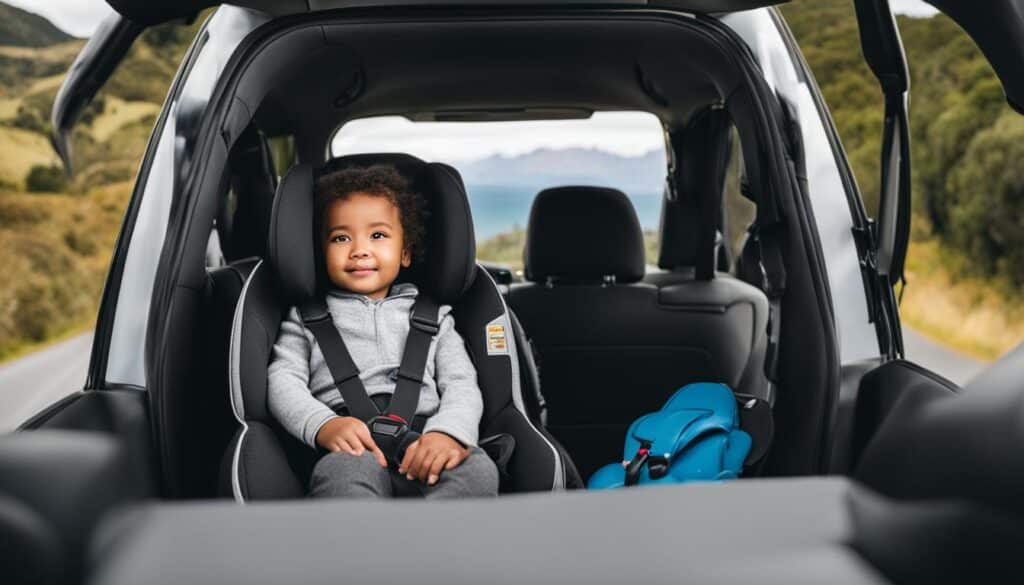
Importance of Proper Installation and Usage
As a parent, I understand the desire to ensure our children’s safety in every possible way, especially when it comes to car travel. It is important to choose the right car seat for our children, but equally important is knowing how to properly install and use it.
The first step in proper installation is reading the instructions provided with the car seat. It may seem like common sense, but taking a few extra minutes to thoroughly understand the instructions can make a significant difference in the safety of our child.
The next step is ensuring the car seat is installed tightly and securely. A loose car seat can be just as dangerous as not using one at all. The car seat should not move more than one inch when pulled at the base.
Many parents make the mistake of placing the car seat in the wrong position. In the case of rear-facing seats, the car seat should be placed in the back seat, facing the rear of the vehicle. For forward-facing seats, the car seat should also be placed in the back seat, facing the front of the vehicle.
Proper usage is just as important as proper installation. It is essential to make sure the harness straps are snug and positioned correctly on the child’s shoulders. The chest clip should be placed at armpit level to ensure the harness straps are in the proper position.
It is important to remember that car seats have expiration dates. Over time, the plastic and other materials can deteriorate, making the car seat less effective. Always check the expiration date and replace the car seat if it has expired or been in an accident.
Proper Installation and Usage Checklist:
- Read the instructions carefully
- Check the car seat for tightness and security
- Place the car seat in the correct position
- Ensure the harness straps are snug and positioned properly on the child’s shoulders
- Position the chest clip at armpit level
- Check the car seat expiration date and replace if expired or in an accident
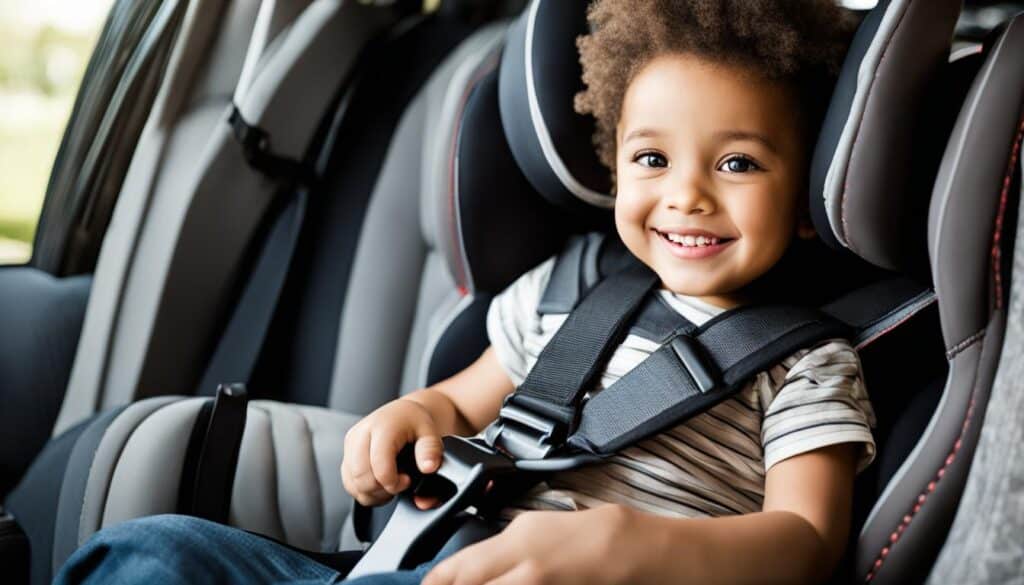
Common Mistakes to Avoid
When it comes to car seat safety, there are several common mistakes that parents and caregivers make that can put children at risk. By avoiding these mistakes, you can ensure maximum protection for your child while driving in accordance with New Zealand car seat laws.
- Using the wrong car seat: It can be easy to accidentally use the wrong car seat for your child’s age, weight, or height. Make sure to carefully read the car seat regulations and guidelines in New Zealand to ensure you are using the appropriate seat for your child.
- Incorrect installation: Even if you have the right car seat, it won’t be effective if it’s not installed properly. Take your time to read the car seat manual and follow the instructions carefully. If you’re still unsure, consider having a professional check the installation for you.
- Loose harnesses: A harness that is too loose can lead to serious injuries in the event of a crash. Make sure the harness is snug and secure, with no more than two fingers’ width of slack between the harness and your child’s chest.
- Incorrect harness placement: The harness straps should be positioned correctly on your child’s body. For rear-facing seats, the harness should be placed at or below your child’s shoulders. For forward-facing seats, the harness should be at or above your child’s shoulders.
- Using a damaged car seat: A damaged car seat can compromise your child’s safety. Make sure to regularly inspect your car seat for any signs of wear and tear, and replace it if necessary.
By avoiding these common mistakes, you can ensure that your child is safe and protected while driving in accordance with New Zealand’s car seat laws. It’s important to prioritize child safety and take the time to properly install and use car seats, as well as staying informed about any updates or changes in regulations.
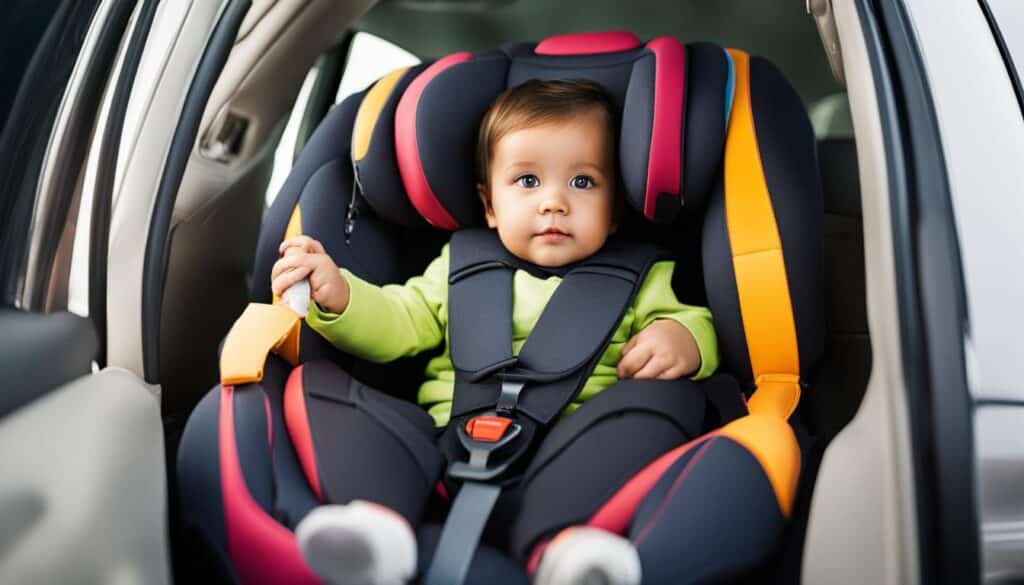
Staying Up-to-Date with Car Seat Laws and Regulations
As a responsible parent or caregiver, it is crucial to stay informed about any updates or changes in car seat laws and regulations in New Zealand. Keeping up-to-date with the latest information can help ensure that your child remains safe and protected while traveling in a vehicle.
One way to stay informed about car seat laws and regulations is to regularly check official government websites such as the New Zealand Transport Agency and the Ministry of Transport. These websites provide the latest information on car seat laws and regulations, including any updates or changes that may have occurred.
Another way to stay informed about car seat laws and regulations is to follow reputable parenting blogs or websites that provide information on child safety while driving. These resources often provide valuable insights and tips on car seat usage, installation, and maintenance.
Useful Resources
Here are some useful resources that can help you stay up-to-date with car seat laws and regulations in New Zealand:
| Resource | Description |
|---|---|
| New Zealand Transport Agency | Official government website that provides information on car seat laws and regulations. |
| Ministry of Transport | Official government website that provides information on road safety, including car seat laws and regulations. |
| Plunket | Non-profit organization that provides support and advice for parents and caregivers, including information on car seat safety. |
| Kidshealth | Website that provides information on child health and safety topics, including car seat laws and regulations. |
By staying informed and up-to-date with car seat laws and regulations, you can help ensure that your child is safe and protected while traveling in a vehicle. Remember, child safety is everyone’s responsibility, and adhering to car seat laws is one of the most important things you can do to protect your child while on the road in New Zealand.
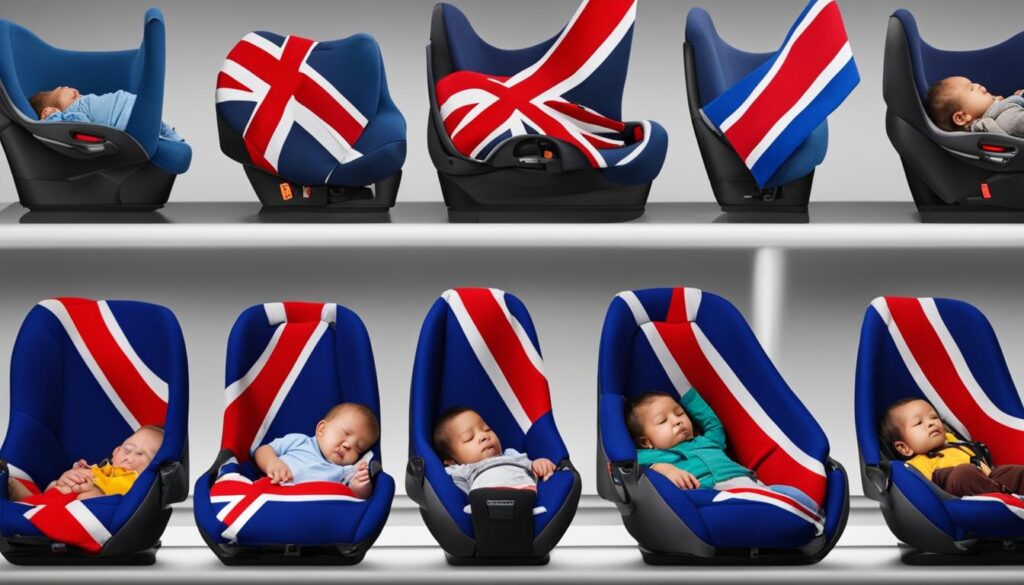
Choosing the Right Car Seat for Your Child
When it comes to choosing the right car seat for your child, safety should always be the top priority. In New Zealand, there are strict regulations in place to protect children while driving, and choosing the appropriate car seat is critical to ensuring their safety on the road.
Before selecting a car seat, it is important to consider your child’s age, weight, and height. The car seat you choose must be appropriate for your child’s size and weight, and it should always be used according to the manufacturer’s instructions.
There are several different types of car seats available, each designed for a specific age group and weight range. Infants should always be placed in a rear-facing car seat, while toddlers can transition to a forward-facing seat once they have outgrown their rear-facing seat. Older children should use a booster seat until they are tall enough to use a regular seat belt.
When selecting a car seat, I recommend doing research to find the best option for your child. Look for car seats that have been tested and approved by safety organizations, and don’t be afraid to ask for recommendations from other parents or caregivers.
It is also important to choose a car seat that fits properly in your vehicle. Before purchasing a car seat, check to make sure it will fit securely in your car and that you can install it properly. Some car seats may be more difficult to install than others, so be sure to read reviews and ask for advice if you are unsure.
Remember, the safety of your child should always come first. By taking the time to research and choose the right car seat, you can help ensure that your child is protected while traveling on New Zealand’s roads.
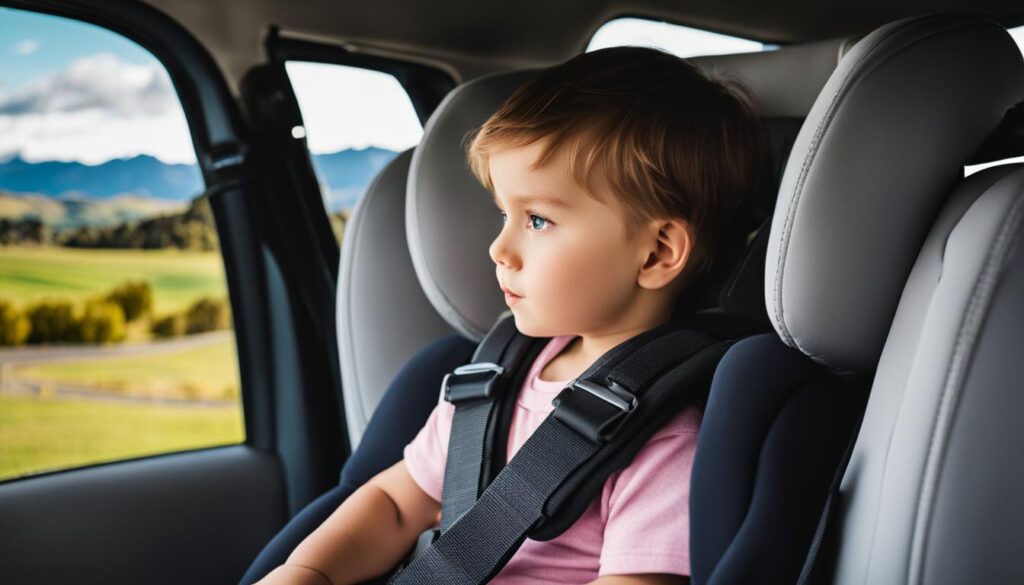
Tips for Traveling with Children in New Zealand
Traveling with children can be a daunting task, especially when it comes to car safety. However, with the right planning and preparation, it can be an enjoyable and stress-free experience. Here are some tips for traveling with children in New Zealand:
- Make sure your child is in the appropriate car seat or booster seat for their age and size. This is especially important in New Zealand, where strict car seat regulations are in place. Remember to also check the seat’s expiration date and make sure it has not been involved in any accidents.
- Plan your route ahead of time and know where rest stops, gas stations, and other amenities are located. This will help minimize unexpected stops and keep the trip on schedule.
- Bring plenty of snacks, drinks, and entertainment to keep your child occupied during the journey. Consider bringing a tablet or portable DVD player with headphones for long trips.
- Take breaks every two hours to allow your child to stretch their legs and burn off some energy. Use this time to change diapers, use the restroom, and grab some food or drinks.
- When staying in hotels or other accommodations, make sure to request a room with a crib or playpen if needed. Some hotels also offer child-proofing services for an additional fee.
- If renting a car, make sure to request a car seat or booster seat in advance. Most rental companies offer these for an additional fee.
- Be prepared for various weather conditions, especially if traveling during the winter months. Pack warm clothing, blankets, and extra towels in case of accidents or spills.
- Finally, remember to stay patient and flexible. Traveling with children can be unpredictable, so it’s important to remain calm and adaptable in case of unexpected delays or changes to the itinerary.
By following these tips, you can ensure that your family’s trip to New Zealand is both safe and enjoyable. Remember to always prioritize your child’s safety and well-being, and have fun exploring this beautiful country!

Conclusion
In conclusion, understanding car seat laws and child safety guidelines in New Zealand is crucial for protecting our most precious cargo while driving. By following the specific regulations for car seat usage based on age, weight, and height, parents and caregivers can ensure their child’s safety is prioritized.
Proper installation and usage of car seats is also paramount. Ensuring the car seat is correctly installed and used in a way that optimizes child safety can prevent severe injuries in the event of an accident.
Staying up-to-date with any updates or changes in car seat laws and regulations is essential. By remaining informed, parents and caregivers can ensure they are following the most current guidelines and regulations.
Choosing the right car seat for your child is also critical. Consideration of factors such as age, weight, and height can help parents and caregivers make informed decisions about which type of car seat is appropriate for their child.
Finally, when traveling with children in New Zealand, it is important to follow car seat usage guidelines and general safety tips to ensure a safe and enjoyable trip.
By taking these measures and prioritizing child safety while driving, we can reduce the risk of severe injuries and fatalities in car accidents. Let’s make it a priority to adhere to car seat laws and regulations and keep our children safe on the roads.
FAQ
What are car seat laws?
Car seat laws are regulations that dictate the use of car seats for children. These laws are in place to ensure the safety and protection of children while traveling in vehicles.
Why is it important to adhere to car seat laws?
Adhering to car seat laws is crucial for the safety of children. Car seats are designed to provide protection in the event of a crash or sudden stop, and following these laws helps mitigate the risk of injury or fatality.
What are the car seat regulations in New Zealand?
In New Zealand, car seat regulations require children to use an appropriate restraint system based on their age, weight, and height. The specific requirements vary for infants, toddlers, and older children.
Can you explain the child restraint guidelines in New Zealand?
Child restraint guidelines in New Zealand outline the recommended types of restraints based on a child’s age, weight, and height. These guidelines provide guidance on choosing and correctly installing car seats for optimal safety.
What are the car seat laws and requirements for infants in New Zealand?
For infants in New Zealand, car seat laws mandate the use of rear-facing seats. It is important to follow these laws and guidelines to provide the highest level of protection for infants.
When can a child transition to a toddler car seat in New Zealand?
In New Zealand, a child can transition from a rear-facing infant car seat to a forward-facing toddler car seat once they have outgrown the weight and height limits specified by the car seat manufacturer.
Why is proper installation and usage of car seats important?
Proper installation and usage of car seats are essential for their effectiveness. An incorrectly installed or improperly used car seat may not provide the necessary protection in the event of a crash or sudden stop.
What are some common mistakes to avoid when using car seats?
Common mistakes to avoid when using car seats include incorrect installation, using an expired or damaged car seat, not securing the child properly, and using the wrong type of car seat for a child’s age, weight, or height.
How can I stay up-to-date with car seat laws and regulations in New Zealand?
To stay informed about car seat laws and regulations in New Zealand, you can consult official government websites, attend child safety workshops, check for updates from reputable organizations, and consult with certified child passenger safety technicians.
How do I choose the right car seat for my child?
Choosing the right car seat for your child involves considering their age, weight, and height. It is important to select a car seat that meets the appropriate safety standards and is suitable for your child’s specific needs.
What are some tips for traveling with children in New Zealand?
When traveling with children in New Zealand, make sure to use appropriate car seats during the journey. Additionally, it is essential to take regular breaks, pack essential supplies, and ensure the overall safety and comfort of your child.
